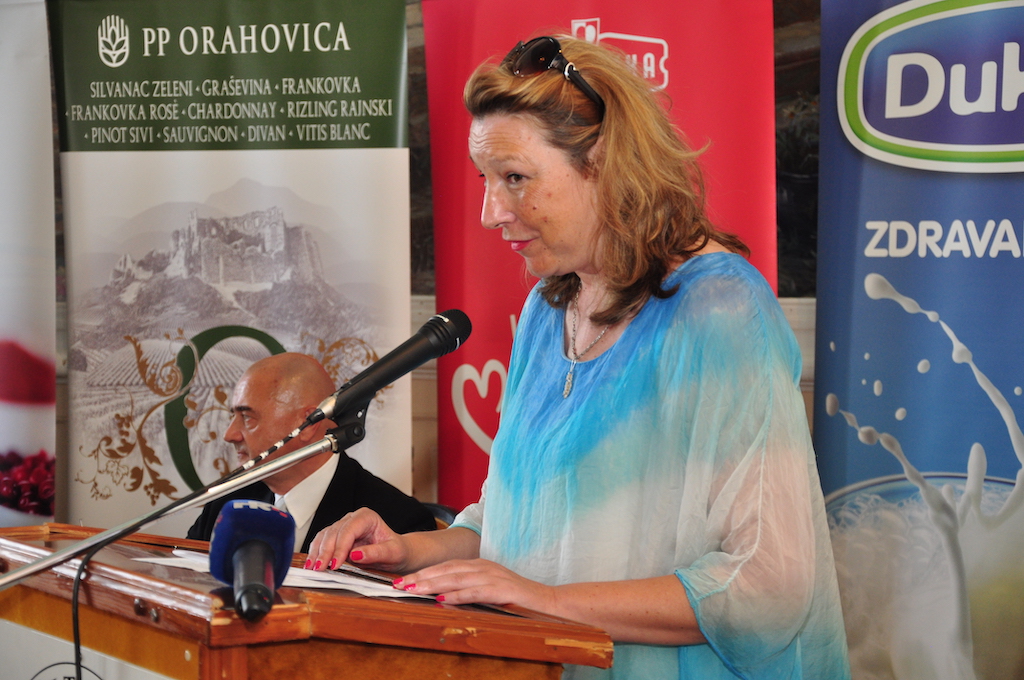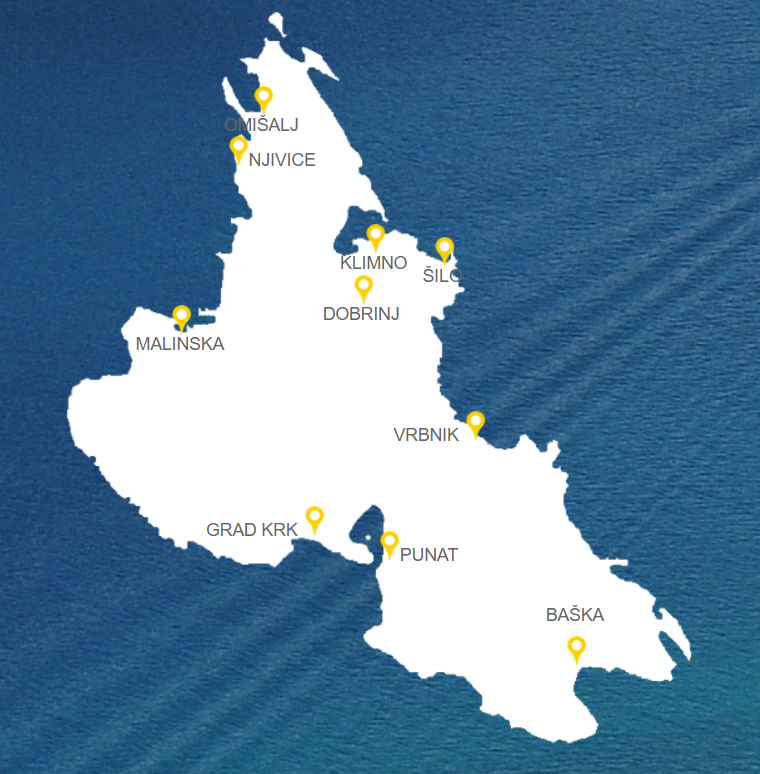Rijeka Gastronomic Ports: New Project Officially Presented by Tourist Board and Abisal
February 12, 2022 - At a press conference at Botel Marina, a new Rijeka Tourist Board project called "Rijeka Gastronomic Ports" was launched in cooperation with Abisal (Gastronaut).
The tourist significance of the project and its significance for the destination were presented by Petar Škarpa, director of the Rijeka Tourist Board, while the project and the idea were presented by Karin Mimica, representative of Abisal (Gastronaut Club), reports the Rijeka Tourist Board.
The mission of "Rijeka Gastronomic Ports" project is to connect catering facilities and develop a new gastronomic brand with the ultimate goal of supporting the stakeholders in the destination and raising the overall quality and visibility.
Škarpa pointed out that “Rijeka can boast of a rich catering offer that has become especially colorful in the last few years. Citizens and visitors can enjoy different types of cuisine, local dishes, exotic restaurants, specialized restaurants, street food, or fine dining. Everyone can find a place "to their liking."
With the accelerated development of the offer, there was a need to find new marketing solutions to present Rijeka's gastronomy. To this end, to our great satisfaction, we joined forces with a partner, Abisal, which is behind several important gastronomic brands, and from which the idea for this project came.
Rijeka Gastronomic Ports will make it easier for citizens and guests to choose restaurants that will satisfy their tastes and different occasions, while restaurants, with the help of a designed communication model, will be able to present their offer structured according to specific target groups."
Within the original marketing concept, meeting specific set criteria, it will profile itself following its specifics and thus emphasize its quality in various areas of gastronomy and hospitality.
The port concept as a combination of cultures, goods, stories, and experiences can be perfectly applied to gastronomy, and this project will strengthen the tourist potential of Rijeka's gastro scene and enable a harmonious offer in domestic and foreign markets.
Guests will easily find information about Rijeka's facilities that will meet their expectations, both in terms of food and beverages, given the society they come from and the additional facilities they provide. So whether they’re looking for the perfect place for a Sunday lunch with family, a place where they can have a business meeting while enjoying a good brunch, where they can enjoy local fish or exotic specialties - the goal is to shorten their journey from a craving to a tasty snack.
"I hope that caterers will recognize the importance of interconnection and joint promotion and that as many as possible join in this strategic project which could achieve a big step in creating a recognizable Rijeka gastronomic brand with the ultimate goal of positioning Rijeka among attractive destinations for food lovers.
The registered catering facilities that meet the prescribed conditions will proudly bear the title of the selected Rijeka gastronomic port as a guarantee of the quality of the offer and service and will become the main trump cards of Rijeka gastronomy," added Petar Škarpa.
The author of the project, Karin Mimica, invited caterers who have not yet applied to support this initiative:
"So far, about 20 applications have been received for various gastronomic ports by seven restaurants (each restaurant can apply in up to 3 categories), and there are about ten more in the phase of thinking how to describe their offer through the port name. We are at everyone's disposal to help them choose or design the name of the gastronomic port that best outlines what each restaurant offers.
In the first division of Rijeka's gastronomic offer into ports, we proposed: romantic gastronomic ports; family gastronomic ports; business gastronomic ports; fishing ports; vegan ports; ports for wine connoisseurs; gastronomic beer ports, ports of local food, and ports of specialty, which include restaurants specializing in cuisines of other destinations and countries. In the meantime, we are receiving new proposals from both caterers and citizens - day ports - snack bars with daily menu change, workers' port, tasting port, barbeque port, and tapas port. We are open to all proposals that sound good in marketing and outline a restaurant's specific offer (image). The main goal of the project is to help citizens cope better with the diverse offer, and caterers to profile themselves through the common marketing platform of Rijeka's gastronomic offer."
For more, check out our lifestyle section.
Rijeka Gastronomic Ports: New Brand to Create a Unique Gourmet Story
February 3, 2022 - The new gastronomic brand aims to bring together local caterers and create a unique gourmet story rooted in Rijeka’s port-city image
The Rijeka Tourist Board and the company Abisal/Gastronaut Club have announced a new project that’s sure to pique the interest of all gourmet enthusiasts.
Rijeka Gastronomic Ports is a project that aims to bring together local catering facilities and create a unique story with immense marketing potential: a gastronomic brand that goes hand in hand with Rijeka’s port city image. The project would also offer support to caterers and improve the overall quality and brand recognition of Rijeka’s gastronomic offer.
The word port/harbour has positive connotations in itself and invokes a sense of safety: just think of the expression ‘a safe harbour’. A port is where we seek refuge from bad weather; it's a place that promises nourishment and comfort, a place we leave feeling refreshed, feeling rested.
Such feelings invoked by ports can easily be applied to other aspects of life in Rijeka; many catering facilities in the city already resemble little proverbial ports. If we think of restaurants in this way, as a caterer, what kind of port would you like your restaurant to be? Or, as a guest, what would be your gastronomic port of choice?
Perhaps a sentimental one - a family port, a romantic port? On the other hand, some might prefer to think of ports as places to conduct business and would thus want for this to be reflected in their establishment.
The possibilities are endless; as a start, nine categories have been established in the initial phase of the project. Caterers are welcome to submit additional themes for consideration, as the project owners are willing to expand the list with categories they deem to have marketing potential, i.e. they reflect specific features or services that could potentially be interesting to citizens of Rijeka and their guests.
Here’s the initial list of categories, together with a few prerequisites that catering facilities need to meet if they’re looking to participate:
Business port - restaurants in this category should have the best available Wi-Fi, widely spaced tables, a separate area for meetings, several modes of payment available, and ideally reserved parking for guests if the establishment is located outside the city centre
Romantic port - restaurants that have an appropriate decor and ambiance, and feature dishes made of ingredients known for properties related to romance - chocolate, truffles, oysters…
Family port - restaurants need to be equipped with a children’s play area and a changing station for babies, offer children’s menus and provide games or colouring books to keep kids occupied at the table
Port for wine connoisseurs - the restaurant’s wine list must contain a minimum of 30 wines, grouped by variety and including detailed descriptions; staff should be trained in wine pairing, serving and decanting
Beer port - the restaurant’s beer list must contain a minimum of 20 beers; staff should be trained in beer and food pairing
Port of local produce - restaurants should be sourcing a minimum of 70% of ingredients from local producers or grow their own produce, and provide documentation to support the claim
Vegan port - the menu must feature at least 7 vegan-friendly dishes based on legumes, whole grains, beans, nuts, fruit, vegetables, and seeds (not containing dairy, eggs, honey, gelatin, etc.)
Fishing port - caterers that either run a fishing business or source their fish directly from local fishermen
Ports of individuality - a somewhat broad category to accommodate all caterers who bring something specific or unique to the table that is not defined by any of the other categories. This includes restaurants specialising in international cuisines, provided they offer at least 7 dishes authentic to the cuisine in question, have the menu translated into the language of the country of origin, and at least one person on the staff who speaks the said language.
Caterers can apply before February 15, 2022 by filling in this form (maximum of three categories). Those caterers who have yet to ensure their services match the prerequisites of a certain port category can request a deadline extension of three weeks, provided they send the request before February 15, 2022.
The Rijeka Gastronomic Ports project was devised by Karin Mimica, a native of Rijeka and the author of the two longest-lasting quality brands in Croatian hospitality - Restaurant Croatica and Gastronaut. She has also organised several dozen conferences and projects related to positioning and branding of gastronomy in tourism.
The project is co-financed by Rijeka Tourist Board, who plan to organise a number of educational workshops for caterers in collaboration with the Gastronaut club.
Gastronaut Publishes "100 Leading Croatian Restaurants and their Recipes 2021/22"
October 16, 2021 - Gastronaut has released the 26th "100 Leading Croatian Restaurants and their Recipes 2021/22".
The 26th printed and online Croatian and English edition of the book Restaurant Croatica "100 leading Croatian restaurants and their recipes 2021/22", published by Abisal biblioteka Gastronaut, was solemnly promoted at Botel Marina in Rijeka.
The project "100 leading Croatian restaurants - Restaurant Croatica" has been implemented continuously for 26 years and is the oldest national brand of quality in catering.
100 leading Croatian restaurants - Restaurant Croatica is a project to promote quality in the hospitality industry through annual elections and the publication of an accompanying publication. It was initiated in 1995, and the basic idea was to do market research on which restaurants best meet the needs of guests and highlight the leaders to motivate others to improve the quality of offer and service.
In 1995, the survey covered about 700 restaurants, while in 2020 that number climbed to over 2,400 restaurants. Part of the voting was conducted through www.gastronaut.hr, and voters were able to further emphasize the quality of the offer, service, and ambiance. In parallel, the caterers voted with the recommendation of colleagues who are their role models and filled out questionnaires with a detailed description of their offer and service. The final word after reviewing all the materials was given by the Honorary Committee of the project, which announced a new list of 100 leading restaurants presented in the book and guide Restaurant Croatica: "100 leading Croatian restaurants and their recipes 2021/22".
This year, 100 leading Croatian restaurants received Restaurant Croatica plaques and stickers with a QR code that leads to the online edition of the book in Croatian and English, while printed editions can be found at points of sale, or ordered from the publisher via this link.
In the book, restaurants are presented with text, pictures, and recipes of home specialties and information that is worth seeing and experiencing in their surroundings, as well as top products that can be found on the table and destinations with their gastronomic and oenological features.
Among the restaurant's recipes, the new edition of the book also includes stuffed prunes with bacon; gnocchi with smoked skuta cheese; goose liver terrine with blueberry jelly; fried summer strudels; lamb carpaccio; tuna carpaccio and tartar; trganci with sour cream and baked bacon; quiche with goat cheese and dried tomatoes; sea bass fillet in škartoc; squid; lamb tripe; Brač vitalac; beef cheeks in port; lamb chops; venison in wine sauce; salenjaci; chocolate cake made of fresh figs, and more.
The Restaurant Croatica and Gastronaut projects are the oldest brands of promoting quality in the Croatian hospitality industry, and across 26 years, a total of 497 restaurants were included in Restaurant Croatica, and 6 restaurants defended the title in all 26 years.
For more, make sure to check out our lifestyle section.
100 Leading Croatian Restaurants and Their Recipes Presented in Rijeka
October 8, 2020 - For 25 long years, the book "100 Leading Croatian Restaurants and Their Recipes" published by Abisal carefully recommends everything worthwhile in Croatian gastronomy.
Restaurants with the Restaurant Croatica label are esteemed top gastronomy temples, so domestic and foreign lovers of fine food always know where to find what they have been looking for all their lives. The latest edition of the burgundy cover saw the light of day a few days ago and was presented at Botel Marina in Rijeka's port.
Leading restaurants are presented with text, pictures, and recipes of specialties and information that is worth seeing and experiencing in their surroundings. In addition to the restaurants that have been selected among the top 100, the book also presents quality and top products that can be found on the table and destinations with their gastronomic and oenological advantages.
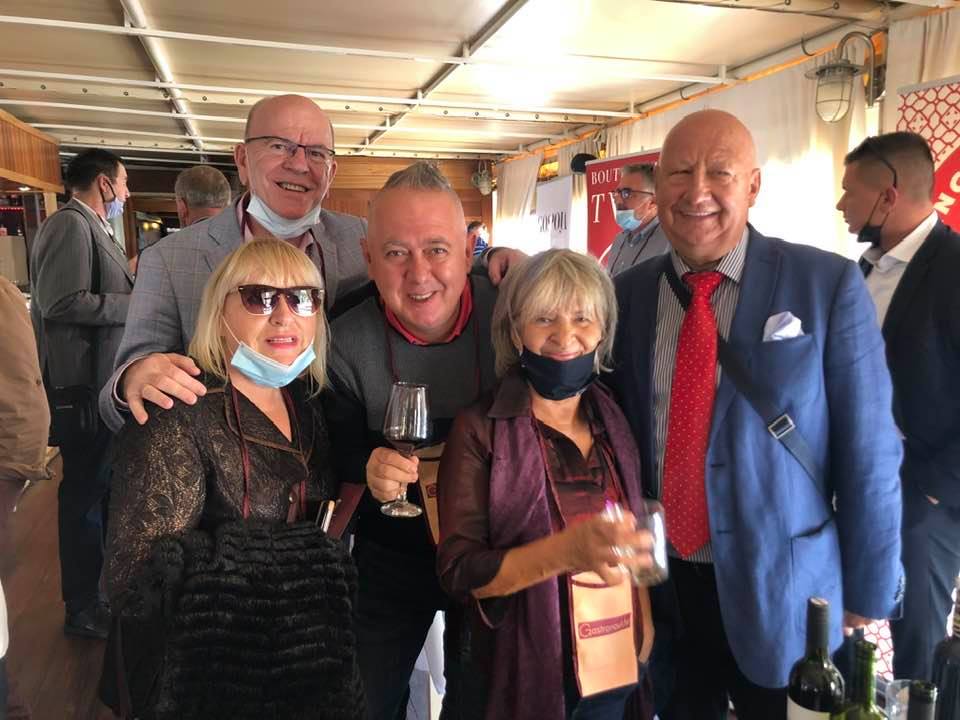
Slobodan Kadic
The project "100 Leading Croatian Restaurants - Restaurant Croatica" has been implemented continuously for 25 years and is the oldest national brand of quality in catering. Holders of the title are gathered in the Gastronaut Club, which has so far organized over 120 thematic gastronomic gatherings and advocates the presentation of destinations, potentials, culture, and history through the prism of gastronomy. The project leader is Karin Mimica, who started it in 1995 in cooperation with the then Croatian Economic Forum. During November and December last year, guests voted for restaurants through www.gastronaut in the first part of the election.hr (there were over 2400 restaurants in the competition), and in the second part, caterers.

Slobodan Kadic
"The Honorary Committee of the project gave the final word by checking the data related to the offer and service of restaurants and established a list that we can be proud of throughout the country and which is the basis for a guide to 100 leading Croatian restaurants and their specialties," says Karin Mimica, project manager of Gastronaut.
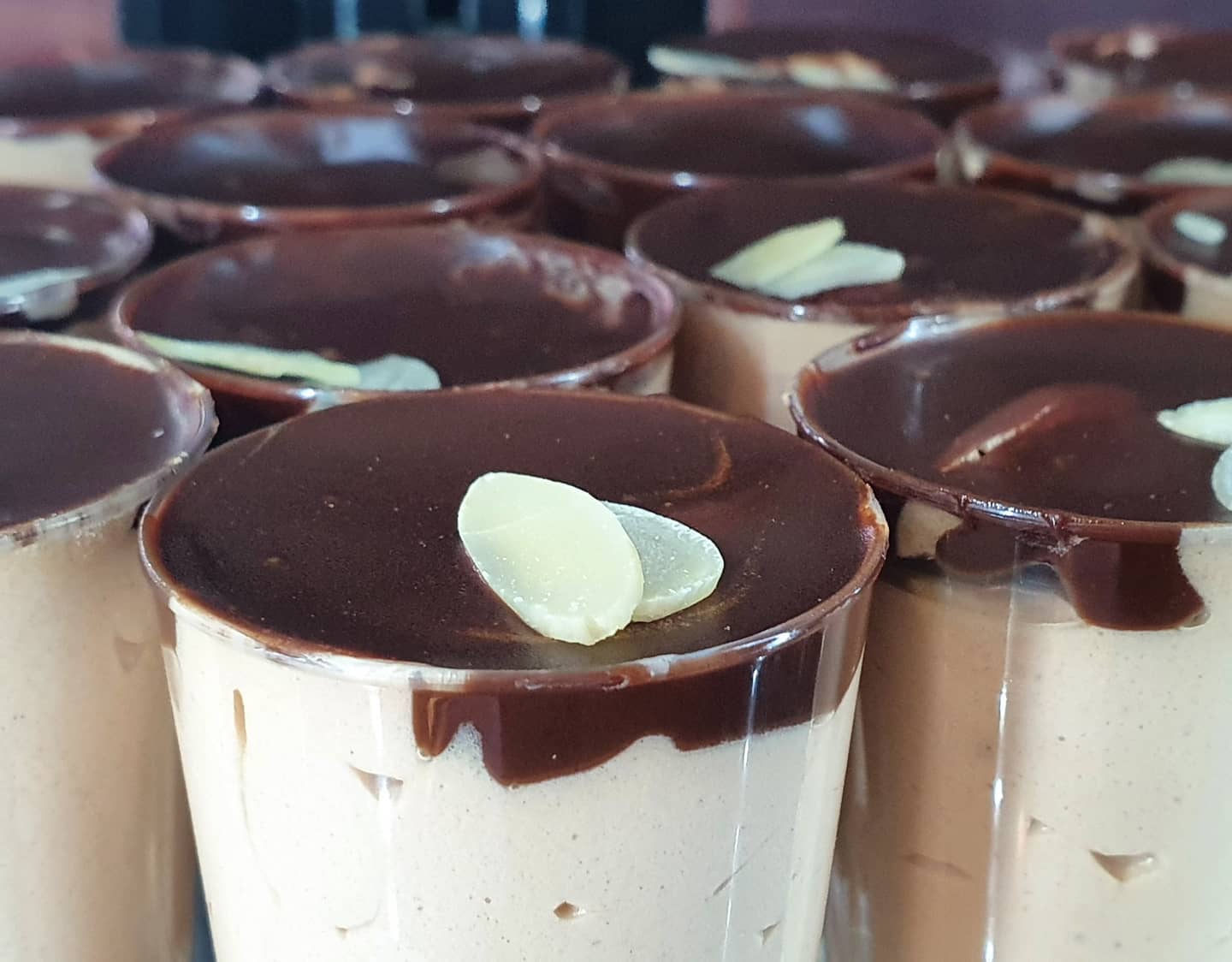
Slobodan Kadic
The selected restaurants also become holders of the Restaurant Croatica 2020 title. In addition to the plaque, they are also awarded a label that leads to the book's online edition in Croatian and English via a QR code. The printed edition has already been distributed to bookstores, larger kiosks, and post offices.

Slobodan Kadic
"Voting for the 26th edition of the leading Croatian restaurants has already begun, so I ask the esteemed readers of Total Croatia News to propose new restaurants, vote for those evaluated, and actively participate in the selection," concluded Mimica.
Only eight Slavonian restaurants were on the list of the best. The latest ones have not yet had a chance to prove themselves, but they need to persevere in building quality. Slavonian restaurants in the edition are Višnjica from Višnjica, Schon Blick from Vetovo, Zlatni lug from Donji Emovac, Krčma kod Ruže from Osijek, Josić from Zmajevac, Kormoran from Bilje, Baranjska kuća from Karanac, and Dunav from Ilok.
For the latest travel info, bookmark our main travel info article, which is updated daily.
Read the Croatian Travel Update in your language - now available in 24 languages.
Can Good Communication Save The Season? Boškinac on Pag Busier Than In 2019
July 13, 2020 - Marc Rowlands interviews Boris Šuljić, owner of Boškinac on Pag, a Michelin-starred restaurant, to try and discover the secret to success in the challenging summer of 2020
Among the neverending doom and gloom of this year, a ray of sunshine through the clouds. At Boškinac on Pag, the restaurant, hotel and winery, business is booming. With better numbers than at this point in 2019, is it possible the luxury sector is suffering less this season from COVID-19? And what is the secret to Boškinac's success so far in 2020?
“I am very satisfied with this year's business,” Boškinac owner Boris Šuljić told TCN with a smile and a carefree tone to his voice. “It's definitely busier than last year. Some days are better than others but, generally, more people are coming.”
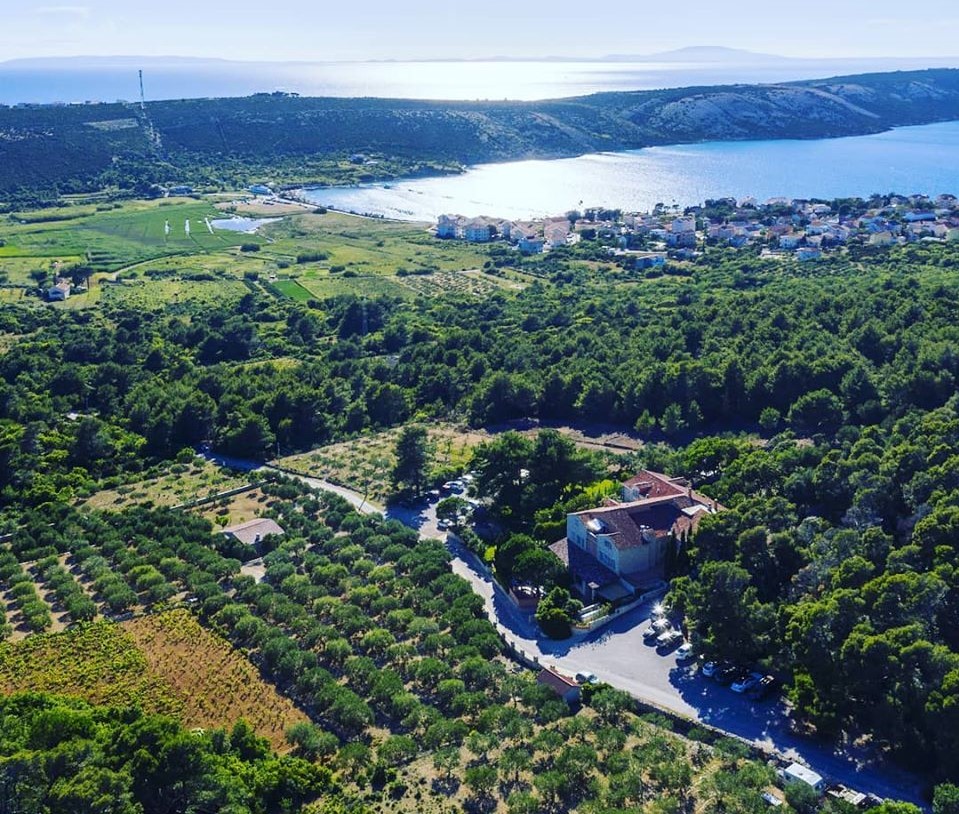
An island within an island. Pag's Boškinac is located within a lush green and neighbourless section of the island's interior © Boškinac
In a year where, depending on who you believe and how you extrapolate the info, tourism in Croatia is down by at least 50%, people sit comfortably isolated on Boškinac's large terrace. There, they take in the view of the olive trees and Boškinac's vineyards, with not a neighbour in sight. With special measures in place, seats in their Michelin-starred fine dining restaurant are similarly full. But just where are these guests coming from?
“Most of them this year have been from Croatia and Slovenia,” says Šuljić, not unsurprised. “I'd say the next largest group is foreign nationals, ex-pats, who now live in Croatia. But, also we've had quite a few from Germany, Austria, and Belgium. It's not so difficult for us to get busy. We are a relatively small hotel - 11 rooms, 55 seats in the fine dining restaurant, and 40 seats in our more informal tavern.”

Boris Šuljić welcoming guests to Boškinac with a glass of their own-made wine in summer 2019 © Fabio Šimićev
Šuljić estimates that in total around 60% of 2020's guests have come from Croatia, 40% from other countries, a distinct change in the usual demographic they receive. Awarded a Michelin star in February of 2020, the hotel and restaurant have earned a reputation internationally for high-quality food, wines, service, and an experience much more unhurried and relaxing than that found in many places on the popular island. So, has he dropped his prices to encourage this year's draw?
“No, not at all” Šuljić tells us, “our prices remained normal. We are not so expensive like some other 4 or 5-star hotels in Dubrovnik, Rovinj, or Split. The average room price is around €200. Until 15 July, we arranged some special packages with the room and fine dining. We kept the food at the same price but offered the rooms a little cheaper in combination. It was successful. It seemed to attract people who'd heard of the hotel and restaurant, who maybe decided that right now was the best time to come and look. It's not so far to come here to check us out when you only have to travel from Split or Istria, even Zagreb, which is where many of these guests have been coming from. They stayed for one or two nights and enjoyed our Michelin-starred restaurant.”
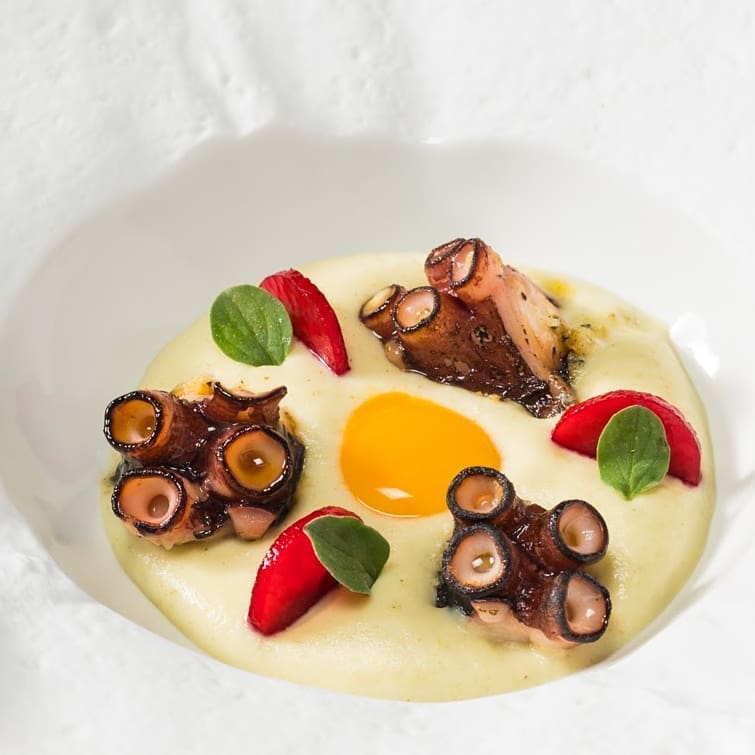
The flair with which Boškinac on Pag use their fresh, locally-sourced and premium ingredients earned them a Michelin star earlier in 2020 © Boškinac
Always keeping on top of developments in Croatia's gastro scene (you can stay updated on our Gourmet pages), one of TCN's most recent reports from Boškinac noted the venue's fluctuating success of the 2019 season. The summer's unusually variable weather was considered as perhaps one factor in the lack of footfall. With the sun shining reliably on Pag this summer, could it be that visitors care more about the weather than they do about Coronavirus? Is sun-seeking really a greater deciding factor for those looking at Croatia holidays than the ever-updating COVID-19 situation? Šuljić thinks not.
“I definitely think we're busier this year because of the Michelin star,” he says. “People seem to really recognise this international sign of quality. We got a lot of attention because of this. I think it is also because of our communication. We capitalised on the attention and we have been sending out very positive messages. We have every reason to be optimistic and it is this optimistic message we have been sending out; we are here, we are a small place, isolated, we have no neighbours, with allocations for relatively few people, but with lots of room and air and enough terrace for everyone. This is not the usual kind of busy hotel that's packed with people. We are very passionate about our food and our hotel experience. Ours is a business that concentrates on quality, not quantity.”
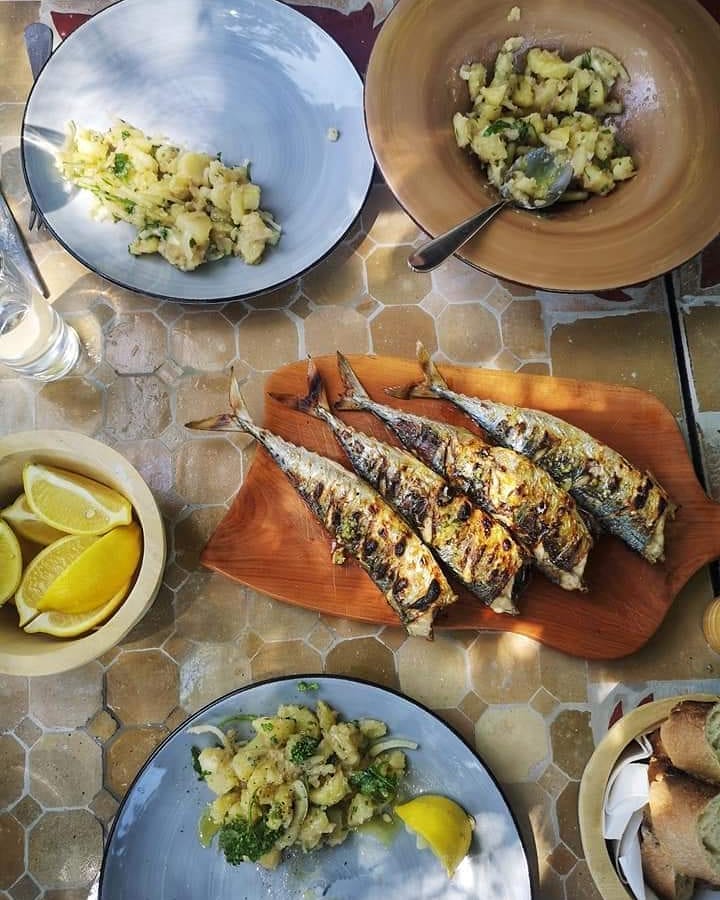
A platter of distinctly Dalmatian delights, an example of the food on offer at Boškinac on Pag's less-formal tavern restaurant © Boškinac on Pag
Though Šuljić's international recognition, unique premises and isolated location undoubtedly offer an advantage in attracting high-end clientele, could other Croatian businesses learn something from the clear and optimistic communication Boškinac has been sending out since the season's start? Well, it's an option to all but, since opening in 200, Boškinac's message and communications have been of premium importance to the business.
“We were very ambitious as soon as we opened, especially with our food,” remembers Šuljić. “But, at that time, this kind of fine dining experience was not so much recognised in Croatia. It was a very high cuisine for the time. People didn't understand what we were trying to do. Slowly we grew with our guests. It was a journey we made together. It was a gradual process. On our part, a mixture of good social media communication, some PR and word-of-mouth recommendations from previous guests was what worked best.”

Spectacular presentation, one of the many wow factors attracting curious visitors to Boškinac on Pag © Boškinac on Pag
Of course, it's too early to tell if Boškinac will maintain its story of success through summer 2020. Šuljić is aware of this. And, even though it is even more difficult to predict the rest of the season than in any other year, he remains decidedly unworried because of their experiences so far.
“It is really interesting,” he says, when asked about future bookings for this summer, “I've never known anything like it. We have so far not had any bookings further than three or four weeks in advance. It's much more week to week. For instance, right now we have zero bookings for August. Usually, I would be concerned. But, it was the same one month ago and now we are almost full. All of the bookings are last minute. People are making their decisions based on the status and the quality of the information available. They check the news and the websites for advice, make a decision and then off they go.”

© Boškinac on Pag
For the best and most up-to-date information on Coronavirus and travel to Croatia, bookmark the Total Croatia News news page.
Total Croatia News is the best-read English language news site covering Croatia for people across south-east Europe. If you want to get your message across to those booking last-minute visits to the Croatia in summer 2020, contact us at This email address is being protected from spambots. You need JavaScript enabled to view it. to see what we can do for you.
25th Edition of 100 Leading Croatian Restaurants Presented
July 9, 2020 - A true gastronomy lover will rarely miss the edition of "100 leading Croatian restaurants and their recipes". For 25 years now, Karin Mimica, the leader of Gastronaut, has published this important issue, which informs all those interested about the best gastronomy Croatia has to offer.
Leading restaurants will be presented with text, pictures and recipes of home specialties and information on what is worth seeing and experiencing in their surroundings. In addition to restaurants selected from among a hundred leaders, the book presents quality and top products that can be found and destinations with their gastronomic and oenological advantages, says Mimica, who launched the project back in 1995 in collaboration with the then Croatian Economic Forum.
The project "100 leading Croatian restaurants - Restaurant Croatica" has been implemented continuously for 25 years and is the oldest national brand of quality in catering. The titleholders and leaders are also united in the Gastronaut Club project, which has so far organized over 120 thematic gastronomic gatherings and advocates the presentation of destinations, potentials, culture and history through the prism of gastronomy.

During November and December last year, in the first part of the election, guests voted for restaurants through the portal www.gastronaut.hr (there were over 2400 restaurants in the competition), and in the second part, caterers. The final word was given by the Honorary Committee of the project by checking the data related to the offer and service of restaurants and determining the list of restaurants that we can be proud of at the state level and which is the basis for a guide through 100 leading Croatian restaurants and their specialties.
Selected restaurants also become titleholders of Restaurant Croatica 2019, and in addition to a plaque, they are also awarded a sticker that leads to the online edition of the book in Croatian and English via QR code, concluded Mimica.
The print edition will be distributed to bookstores, larger kiosks and post offices in early August. Awarding the Restaurant Croatica plaque this year has been postponed to October 6, 2020, so that the caterers can join after the main season. By no means should you miss this valuable publication, and everything else that happens will be finger-licking good.
Note: Only eight Slavonian restaurants were on the list of the best. The newest ones have not yet had a chance to prove themselves, but they should not lose hope. A great refreshment is certainly restaurant Zlatni lug from Donji Emovac near Pozega, which with its top offer of food and wine in an authentic cellar (with decent prices) stands out significantly from all restaurants in the area. Other restaurants are: Visnjica from Visnjica, Schon Blick from Vetovo, Krcma kod Ruze from Osijek, Josic from Zmajevac, Kormoran from Bilje, Baranjska kuca from Karanac and Dunav from Ilok.
To read more about lifestyle in Croatia, follow TCN's dedicated page.
25 Years of Authentic Croatian Gourmet Goodness: Restaurant Croatica, Karin Mimica Interview
July 12, 2020 - Looking for the best and most authentic Croatian gourmet goodness. Karin Mimica on 25 years of Restaurant Croatica.
Just over six years ago, the fabulous Dagmar Meneghello on Palmizana on Hvar sent me a message and told me about a gourmet event about to start on Hvar. Some foodie journalists from an organisation called Gastronaut were coming on a three-day media tour, and Dagmar insisted that I had to be on the tour.
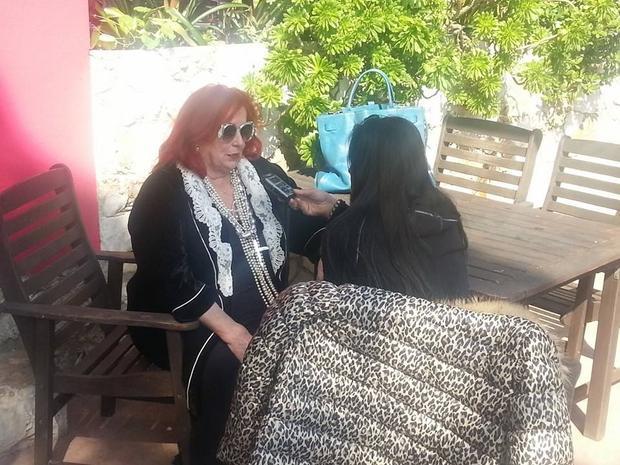
And that is how I came to meet one of the most dynamic, positive and inspirational forces that exist today, the legendica that is Karin Mimica.
Being a food tourist on my adopted island was something like this:

Day 1 - a tour of Hvar Town, including the hospitality of famous fish restaurant, Gariful.
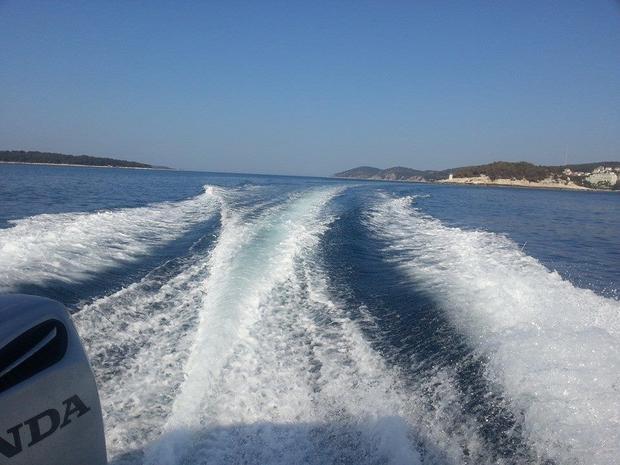
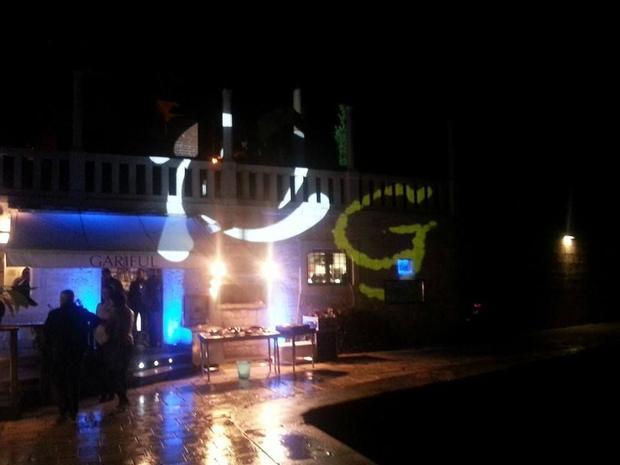
I was hooked, and I made a mental note to never to miss an event organised by Karin Mimica. And I have been largely true to that over the last six years.
Following Karin has led me to sensational discoveries in Medjimurje, Ozalj, Koprivnica, Djurdevac, Pag, Murter, Krk, and plenty of lesser known destinations in Croatia. And the programme has always been superbly executed, a mixture of fun, learning, and great food and wine. Of all the people I have met in my time in Croatia, nobody has given me as many authentic Croatian gourmet experiences as Karin. And for that I am truly grateful.
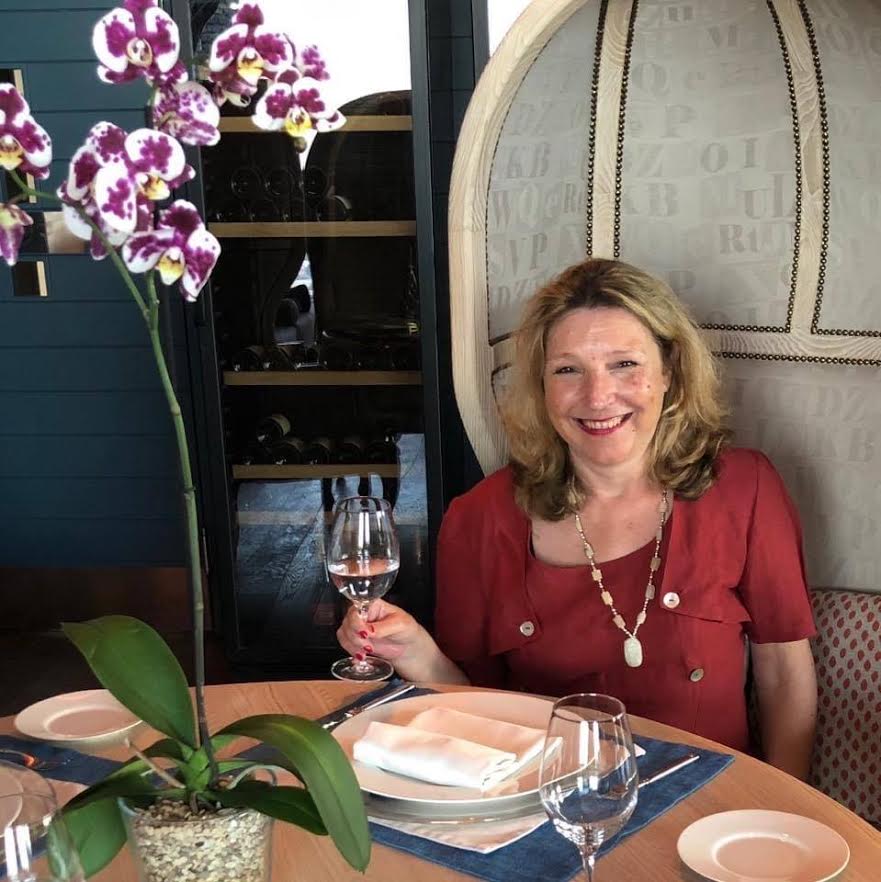
I am grateful also that she has found a little time to tell us more about one of her amazing projects which is hitting its silver anniversary - the Restaurant Croatica guide.
1. 25th edition of Restaurant Croatica - 100 best restaurants in Croatia and their recipes is almost ready to be published. Tell us about the concept and how it started.
The project 100 Leading Croatian Restaurants - Restaurants Croatica was initiated in 1995. Back then, among our diaspora in Germany, people who owned almost 3000 restaurants, an idea appeared: to help young Croatia brand itself as a country of flavor, through the offer in their restaurants. A great enthusiast and our businessman Nikola Serdar started a project in Germany, the Croatian Economy Forum, in which our restaurants found themselves with a new brand, Restaurant Croatica. Since they didn't have a clearly defined idea of Croatian cuisine or who to support, they decided to endorse the project I proposed: the selection of the 100 leading restaurants in Croatia Restaurant Croatica and publishing of the edition under the same name. The basic idea was to do market research about which restaurants best serve the needs of their guests, and highlight the best ones in order to motivate others to improve the quality and the service. The project Restaurant Croatica doesn't exist in Germany anymore, unfortunately, but here in Croatia, in Abisal company, Gastronaut editions, we are preparing the 25th edition. Nikola Serdar, who used to head all those beautiful initiatives, has moved his manufacturing to Croatia and he's still a member of the Honorary Board and the adviser to the project. In 1995, around 750 restaurants were covered in our research, and in 2019 the number has gone up to over 2400 restaurants. The inclusion of a restaurant in our survey was never financially conditioned, nor could they buy their titles in any way. In our guide, which is a result of our selection of the 100 leading restaurants, they present themselves with what they're offering, their recipes and natural, historical, and cultural environment. The 25th edition will be published during August of 2020, and the ceremony in which the plaques will be awarded is to take place on October 6th on the Marina boat in Rijeka. In addition to the restaurants, the book also presents the manufacturers of high-end products you can buy for your table and various destinations with their food and wine highlights.
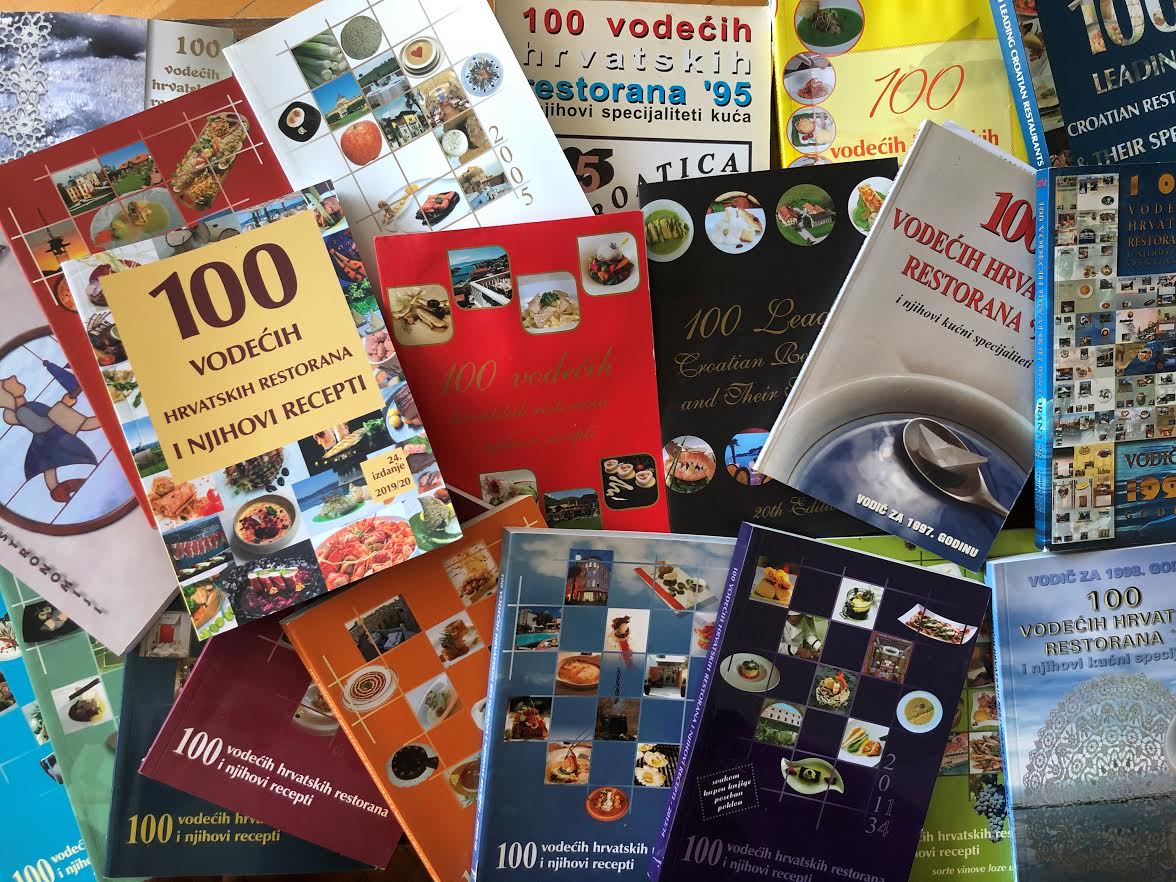
2. What methods were used to select the restaurants which made the list?
Every year, during November and December, visitors of the www.gastronaut.hr website are invited to vote for their favorite restaurants (each year, they're allowed to vote for each restaurant once). The guests grade the offer, service and the atmosphere. The restaurant needs to be in our database for the guests to be able to vote, and the addition to the database is free and over 5400 restaurants are already in the database. In the next step, the people in charge of a restaurant provide us with the detailed information about their service and what they offer, and vote for their colleagues who they believe have made the biggest positive changes. The final verdict is by the Honorary Board, keeping in mind that a restaurant needs to be ranked high both on the list created by the guests and by the colleagues, but also needs to meet a lot more criteria needed to be included in a guide, whose goal is to present the Croatian cuisine at its finest, primarily through restaurants who work year-round and are tailored to the modern guest of a refined taste. My closest collaborators, Marina Selak and Vlatko Ignatoski, graphic designer are working with me on the 25th edition.
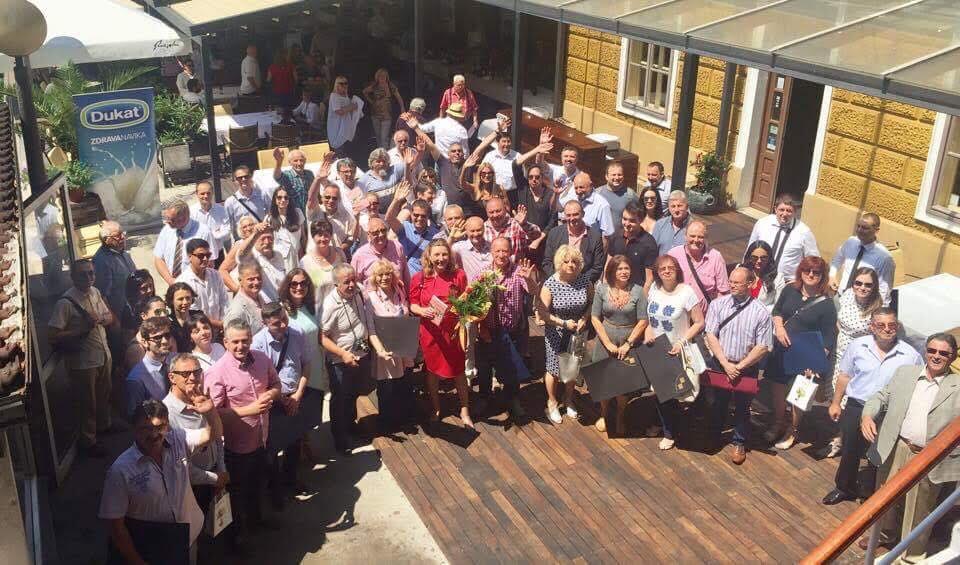
3. A difficult question, but how has Croatian gastronomy changed in those 25 years?
It's changed a lot. As I was going through the 1995 book, you can see in the photos that the restaurants seem to have a competition who will be able to put more food on a plate. Today, it seems that the competition is - who will be able to put less! The plates have become pieces of art. The restaurants have also become stages for many stories about the ingredients and wines and history and culture, even about fashion. The knowledge of gastronomy is much higher, people are following the worldwide trends, and the indigenous ingredients are getting the newly-found respect.
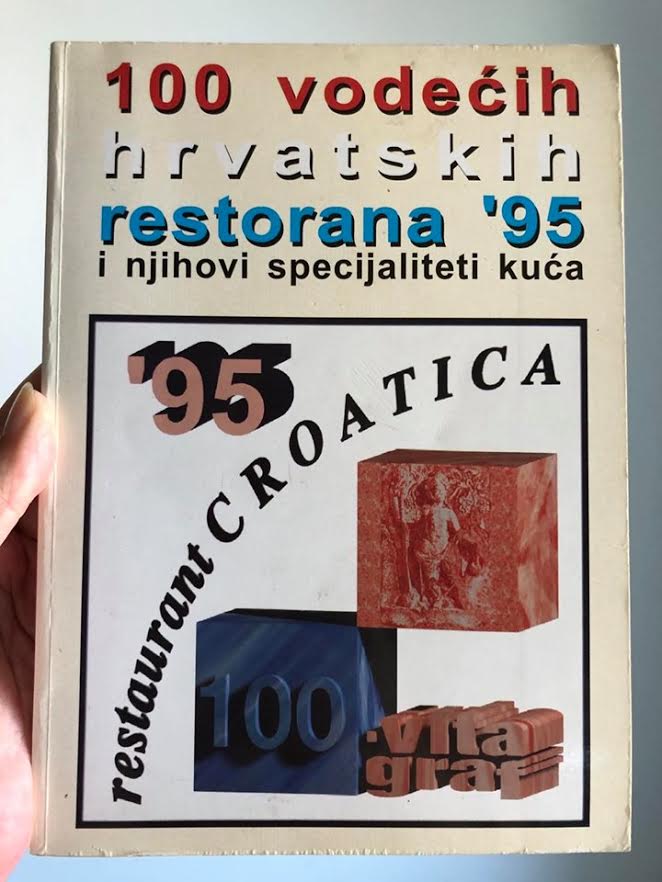
4. Which new trends are you noticing, considering the specific situation we're in now?
Hospitality is going through a rough period, being forced to adjust to the new reality. The restaurateurs tell me that things are just different now, that they mostly see couples in the evenings, but if provided with a peaceful seating, those couples still know how to enjoy themselves. I believe more people will ask for functional menus, with ingredients that directly benefit health. In terms of ordering and technological benefits to the hospitality, I expect the increasing use of QR codes linked with the menus, which will make ordering easier for the guests, and the restaurant wouldn't have to disinfect the menus so many times during a day. We can expect the deliveries from the restaurants to keep increasing, and they could turn more creative. It is possible that pelinkovac will become one of the popular aperitifs, as the extract of the sweet wormwood is being tested as a potential cure for corona. It might even hold water, as a Chinese scientist Tu Youyou won a Nobel prize in 2015 for the cure against malaria, which is also made using the sweet wormwood extract (Artemisia annua). The story has gotten me very interested, so myself and Gastronauts have decided to look into both the plant and its extract, which is the basis for pelinkovac.
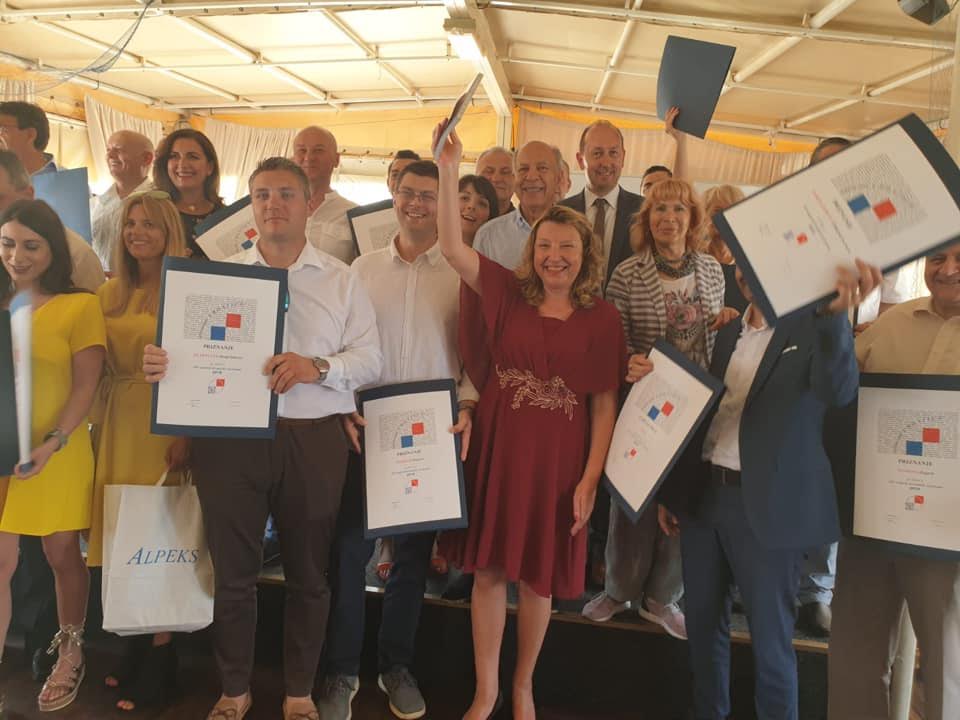
5. It is 8 years since Anthony Bourdain discovered Croatian cuisine and found 'world-class food, world-class wine, world-class cheese.' How do you view Croatia as a gourmet tourism destination and what could we do to attract more tourists?
Croatia has great potential, both in the ingredients and in the people. I hope that people from the tourist boards will become more aware of that, and start presenting Croatia as a country of amazing flavors and food stories, which would lead to year-round tourism. I've put together leading Croatian restaurant owners and tourist journalists in my Gastronaut club, and we've organized 120 thematic gatherings thus far, in various destinations. During those meetings, the entire region is presented in its natural and historical surroundings through the prism of food. We've expanded our club's activities to Gastronaut education, where the top people from the industry share their knowledge with people from the hospitality in various locations, so we're helping them together to become a recognizable food destination. Some of those activities took place in the last year on Krk, through Krk Food Fest and in Karlovac, where we were a part of the IQM project, aimed at branding the region through the meals in which the main ingredients are beer and mushrooms from the local collection point. I always invite our colleagues, tourist journalists from Croatia and abroad to tell me if a project we're working on has a point, in terms of flavor and content, because they can see the potentials more broadly.
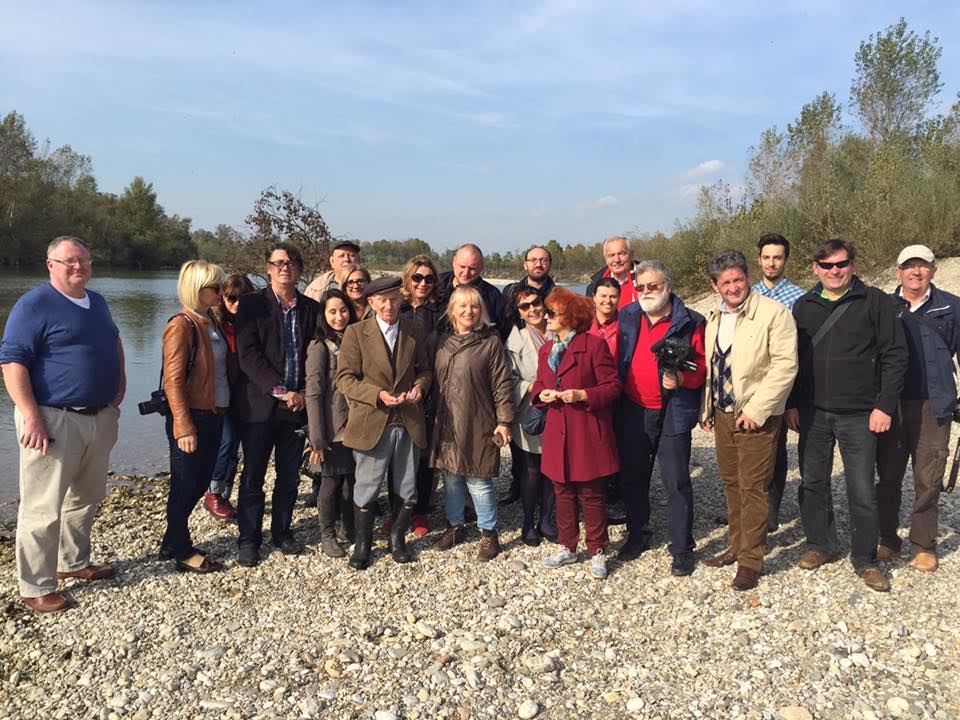
6. One of the things I find interesting about Croatian cuisine is that there are very strong regional cuisines, but no real Croatian national cuisine. And it is quite rare to find the cuisine of another region in the local restaurants. What are your thoughts on this?
The local, regional specialties are always a product of the natural environment, and the history and tradition. The different parts of Croatia are in the geographical locations of completely different potentials and history and I don't think it makes sense to push them under the same umbrella. Yes, it's nice when you can taste specialties from different parts of Croatia in one place. We have restaurants by the sea where you can have continental food and sea-food restaurants in continental Croatia. The biggest bridge between the two are the pizzerias, where you find ingredients from different regions arranged on pizzas, and then the pizzas even named after the region.
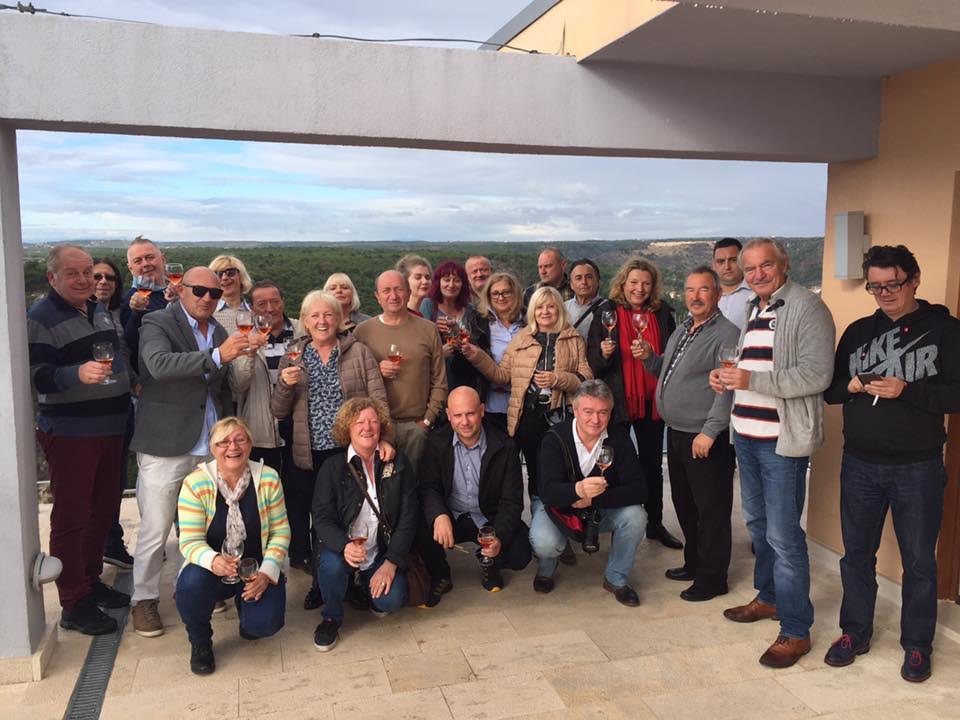
7. Which recipes have the restaurants decided to present themselves in your book this year?
Most restaurants decided to present local ingredients from their region, prepared both traditionally and creatively. Here are some of the dishes from the book:
San Rocco, Brtonigla - Marinated sole-fish fillet with chives mayo;
Domino, Dramalj - Blue fish road;
Marina, Krk - Grilled sheep cheese;
Marina, Punat - Lamb crown;
Aratore, Mali Lošinj - Drunk scampi from Kvarner;
Boškinac, Pag - Boškarin rump-steak;
Vinko, Konjevrate - Lamb tripe;
Kadena, Split - Wheat with smoked sea-food;
Knez, Omiš - Soparnik from Poljica;
Porto Rosso, Lastovo - Fish fillet in the cognac sauce;
Villa Neretva, Metković - Dalmatian pašticada;
Frankopan, Ogulin - Cream of nettle soup;
Gradina, Josipdol - Sarma made with Ogulin sauerkraut and game meat;
Karlo, Plešivica - Cream of ramsons soup;
Potkova, Zagreb - Beef cheecks in Port;
Mala hiža, Mačkovec - Meso iz tiblice;
Academia, Marija Bistrica - Veal fillet with pumpkin and beetroot puree;
Bernarda, Varaždinske toplice - Young ox cheeks on the cream of potato and celery;
Podravska klet, Koprivnica - Goose liver;
Schön blick, Vetovo - Carp na rašljama
Zlatni lug, Donji Emovci - Podolac ispod peke
8. Your book is in Croatian and English. Where can people buy a copy?
The book will be sold in Hoću Knjigu and Menart bookstores and in certain Tisak and Hrvatska pošta locations. You can also order it on www.gastronaut.hr/knjige/, where you can also browse through the online editions in English and in Croatian. The QR code from the Restaurant Croatica stickers awarded to the 100 leading Croatian restaurants also takes you there.
Krk Food Fest: Meet a Gorgeous Gourmet Island with a Bridge
The Krk Food Fest opened on April 19, 2019, and TCN joined 50 other journalists on a 3-day Gastronaut tour of the island with a bridge to learn more.
Having spent so many years living on one of the most beautiful islands in the world, I am always curious to compare and contrast my little slice of paradise with other islands. And while an island would have to be very special to come even close to me shifting my allegiances (as Korcula has managed to do), it is rare that I find something that compares.
But if you are looking for someone to show you the very best of a destination in the shortest possible timeframe, then I heartily recommend the gourmet tours of Karin Mimica and the fabulous Gastronaut. I posted on social media before our three-day tour of the island and participants of Krk Food Fest that I would even follow Karin to the gates of hell if she were organising the tour, for she is simply the best in the business.
And through her eyes and programme with the Krk Tourists Board, the island of Krk shone.
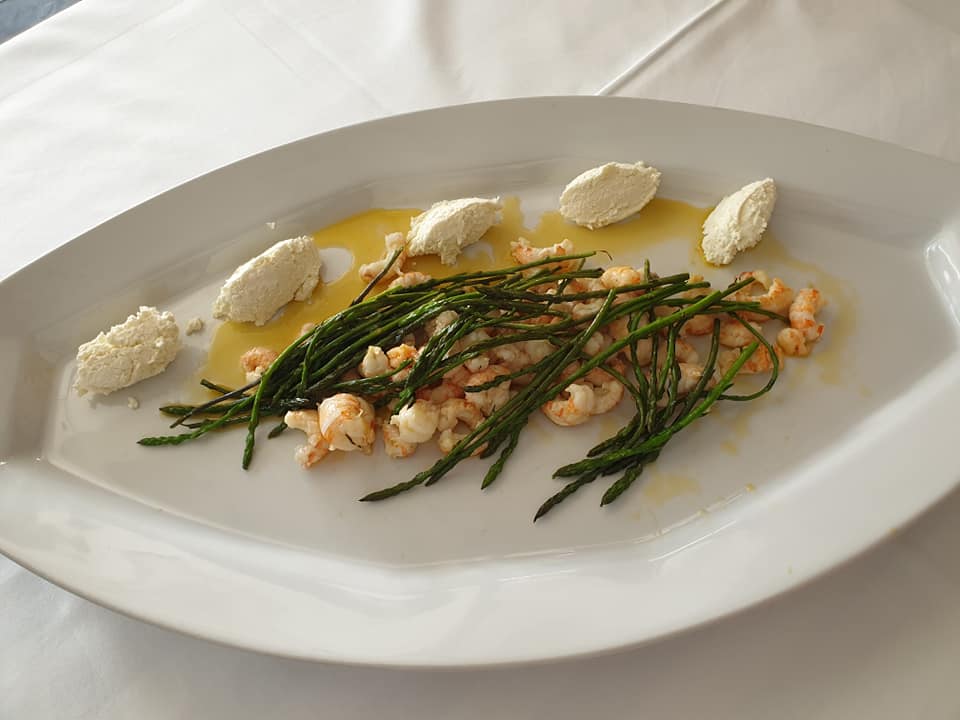
Such is the popularity of the Gastronaut tours, which this time included 50 journalists from all over the region, as well as the UK, that restaurants are keen to showcase their wares in front of such an audience, and the Gastronaut Krk programme was among the fullest - and most delicious - I have been fortunate enough to participate in.
And the theme of 'Tastes of Spring' got off to an incredible start in Malinksa at Restaurant Primoska Koliba, where prawns and wild asparagus were just one of the outstanding dishes.
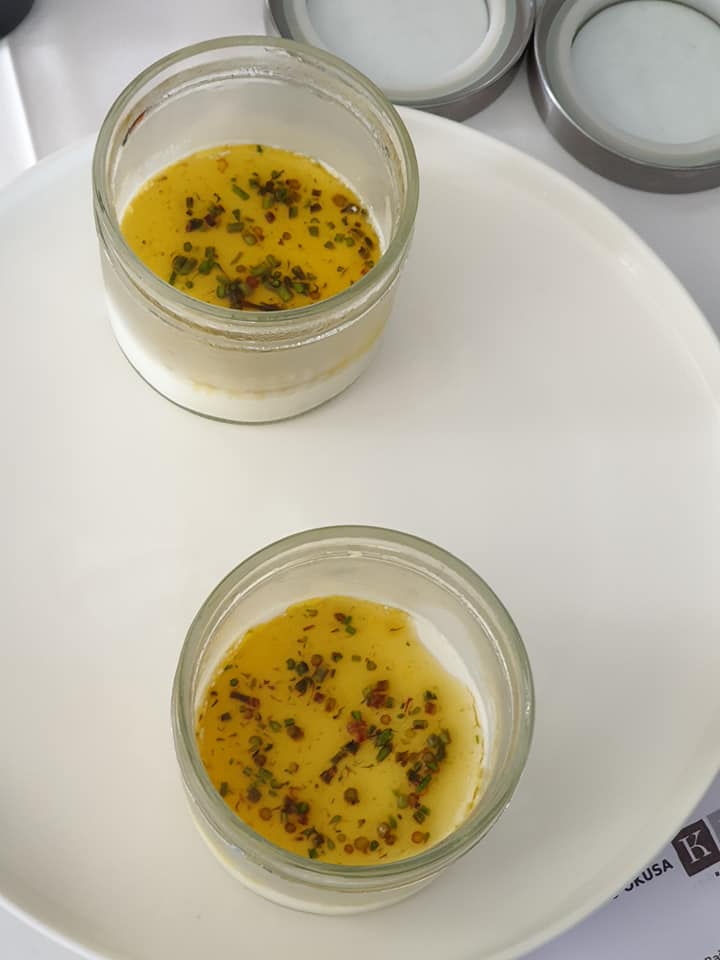
But first prize for innovation, and a true delight, was the asparagus panna cotta. Very original and in keep with the theme of the festival.
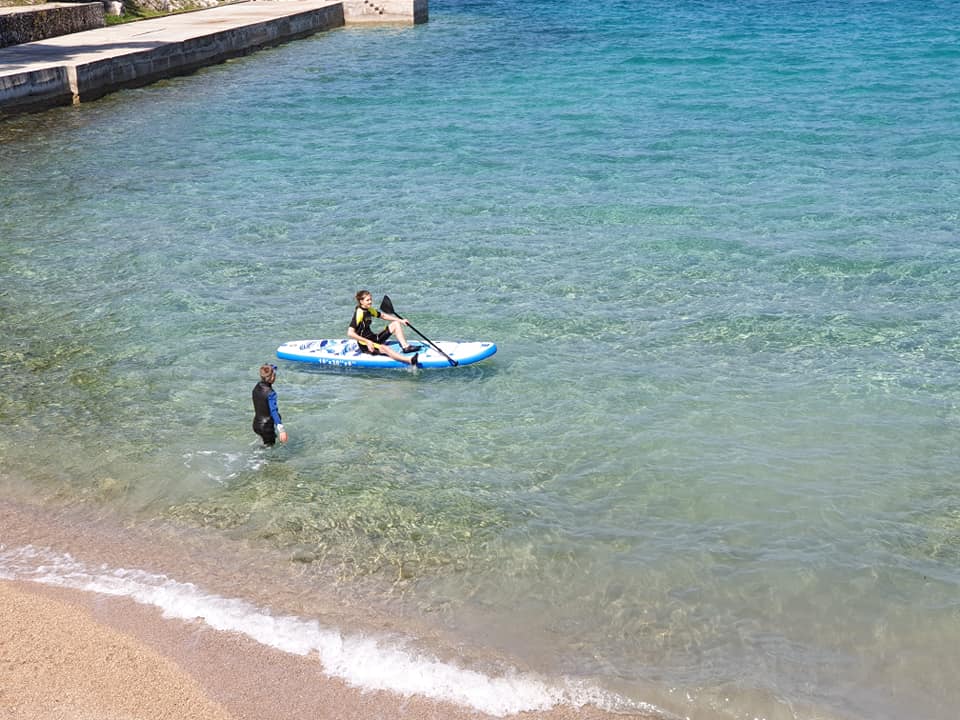
Nothing quite beats Spring on a Croatian island when the weather is favourable. A time to enjoy before the peak season crowds and higher temperatures. Having enjoyed the Korculanske Pjatance food festival about the same time last year, I heartily recommend you look into the Croatian food festivals taking place this time of year - here is an introduction to some of the quirkier ones - Natural Food Festivals: 25 Things to Know about Croatian Gourmet Goodness.
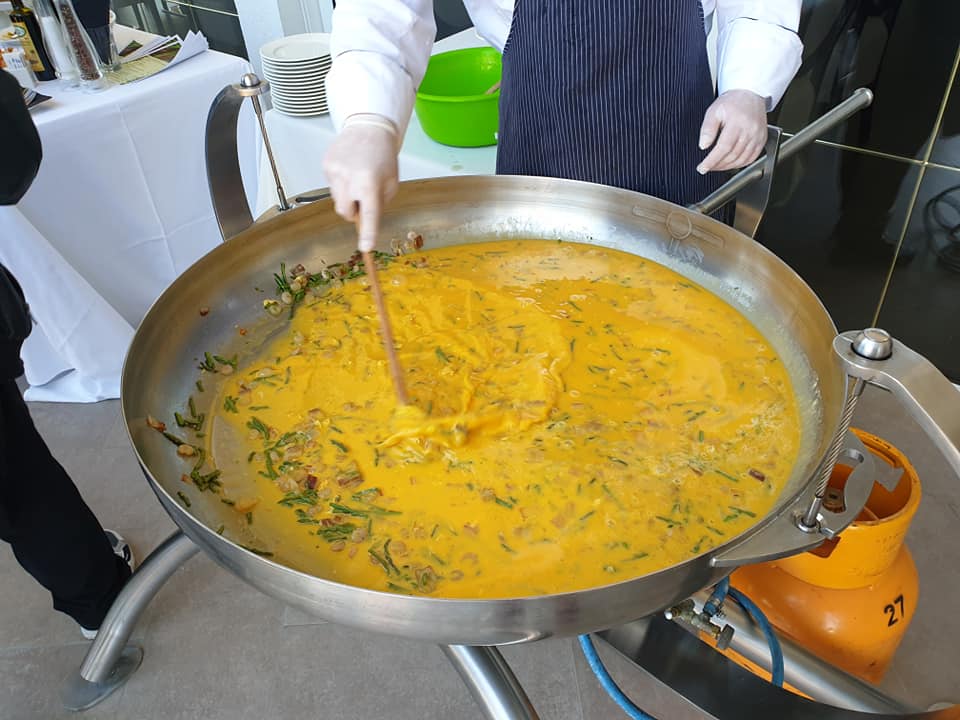
A short walk to Hotel Malin's Mulino restaurant brought the second round of breakfast, of which the highlight was this egg fritata with bacon, prawns and asparagus.
One of the keys to the success of Gastronaut tours is the precise organisation and Karin's ability to keep her guests under control and on schedule, no mean feat when then there are 50 foodie writers tucking into fine wine and food. The next stage was a joy, and a rather unusual experience - a short catamaran ride to Porat with Aquavision - complete with huge glass windows below deck, where one could observe life below and above water simultaneously - check out the video above.
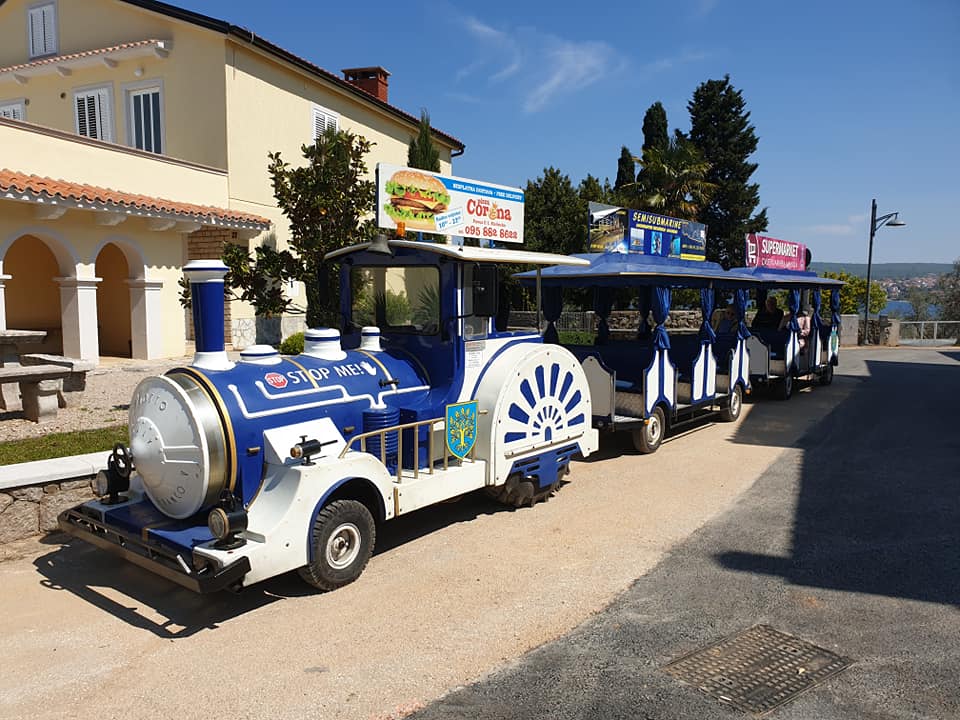
More unusual transportation awaited in Porat in the shape of a road train, which was on hand to take the group for olive oil tasting at OPG Utla and a visit to the Franciscan Monastery in Porat, which involved a little off-roading - a first in my train riding experience.

The monastery, with its cool cloister, had some outstanding artifacts (we will be writing a separate article soon), and a first introduction to the ancient Glagolithic language, indigenous to the Krk region, about which we were to learn much more the following day.
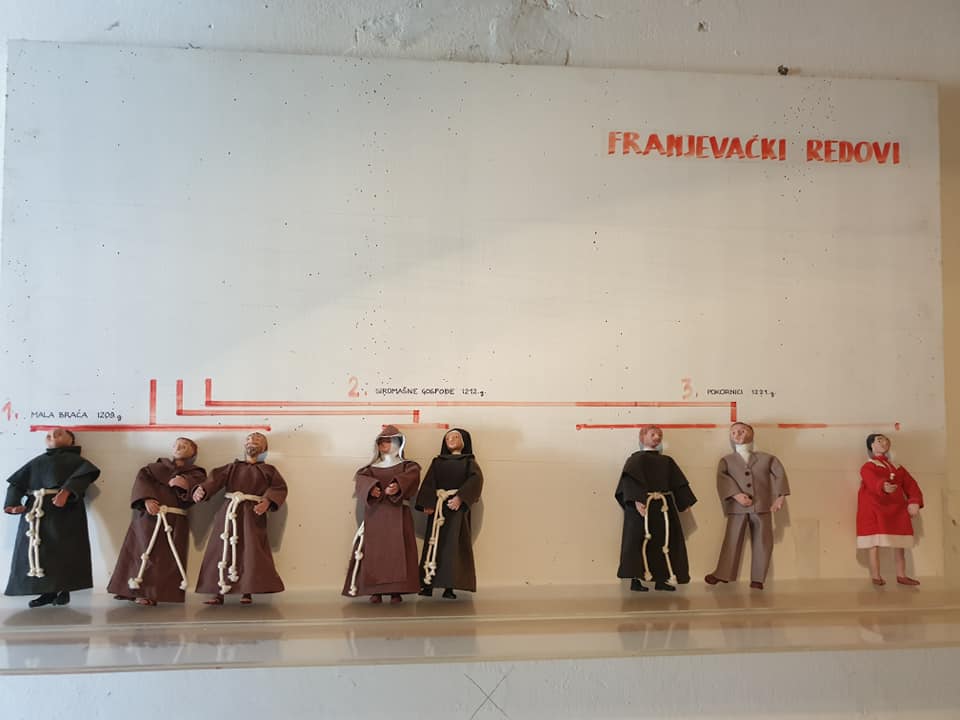
I particularly likes this cute timelime of Franciscan monk fashion over the centuries.
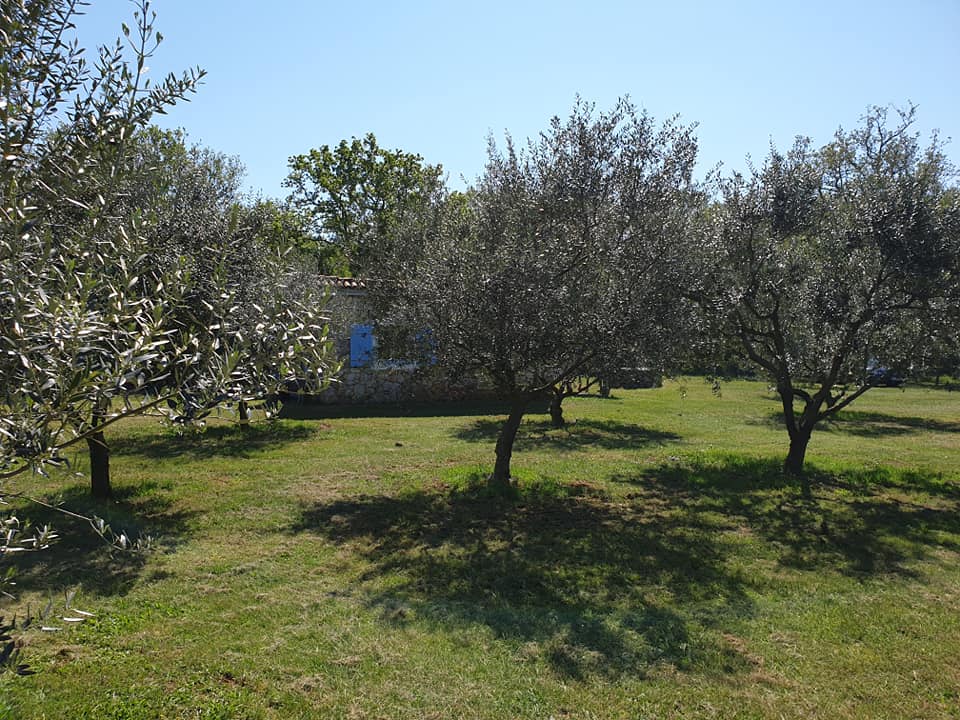
Next stop OPG Utla, a true oasis of calm in this already peaceful island. Sitting among the trees, tasting the excellent family olive oil and admiring another great sea view, this short stop was in many ways a highlight of a very busy day.

And it seemed that I was not the only one in the mood to relax - I declare the 2019 bench tourism season officially open with this local giving a superb display of the 'fjaka' state of mind.
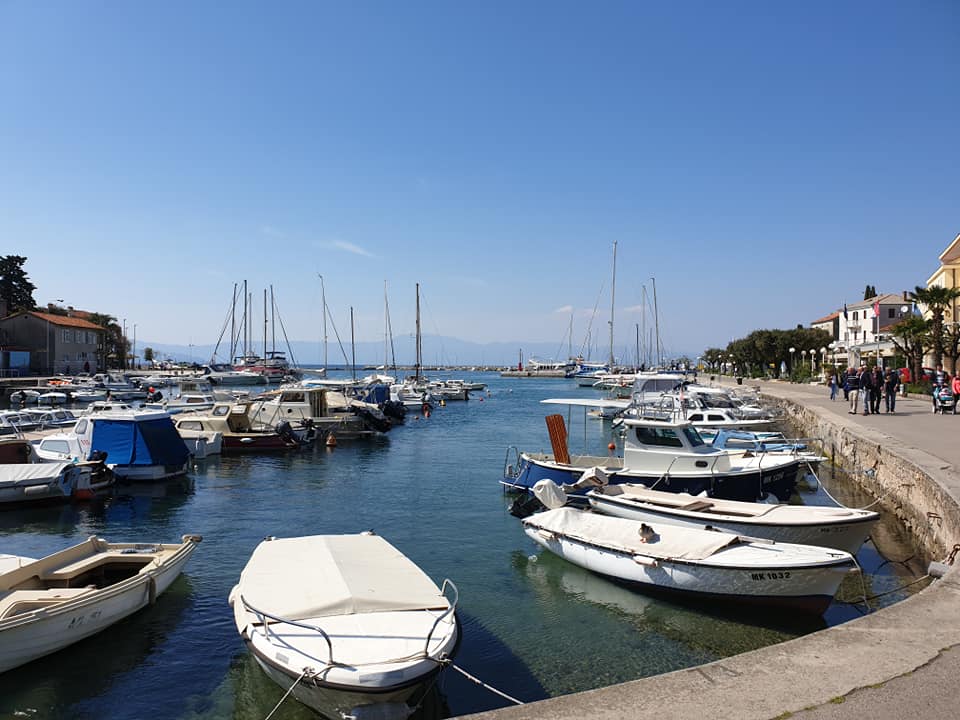
Krk is an island. And it is not. A bridge connecting Krk to the mainland in the 1980s removed one of the biggest characteristics of an island - the need to arrive by boat. Rather than be tied to a ferry schedule, locals and tourists can access the island 24 hours a day, via the 1.4 km bridge, at a cost of just 35 kuna (free for locals), which not only compares favourably with a car ferry cost, but makes Krk immediately more appealing as a destination. No wonder it is one of the most popular places to own weekend houses for people in Zagreb, just over two hours away.
I was expecting that Krk would have lost some of its island identity as a result, but it very much had the feeling of an island full of its own traditions and quirks. And Malinska Bay, above, is typical of an island village harbour. The roads on Krk are excellent, with good access to all its coastal destinations. What did surprise me the most was the sheer diversity of its vegetation. Having been raised on Hvar pine trees, the Mediterranean flora and fauna on the one hand, and forests of oak on the other, were a striking and very welcome contrast.
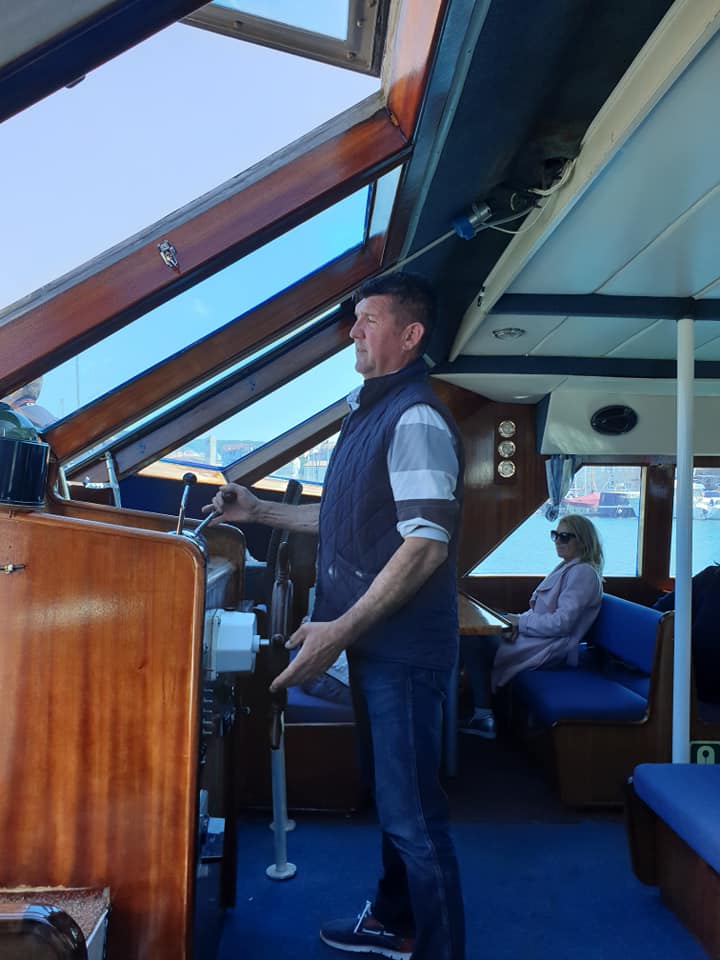
Incredibly, only three hours had passed since the start of the tour with those prawns and asparagus at Primorska Koliba, and time for more food, as Karin rounded up the troops for a return boat ride to Malinska. I decided to stay above deck for this one, as journalistic underwater selfies took place below me.
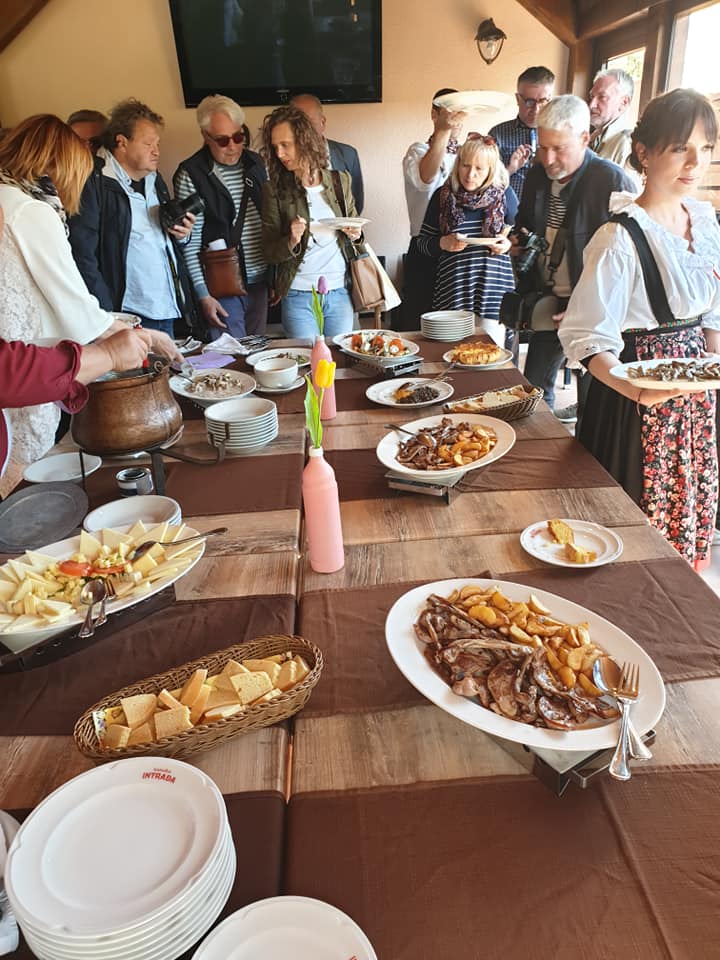
Next up, Konona Intrada, and a first taste of the famous Krk lamb chops, whose taste is partially defined by the salt brought to the island by the biting Bura wind. It was well worth the wait.
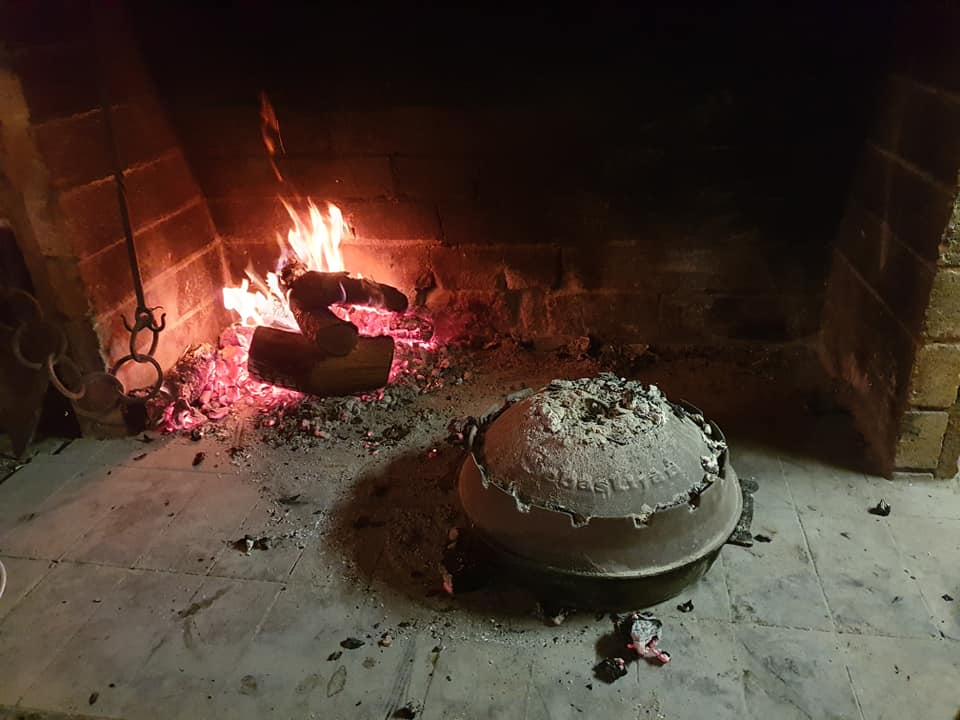
Our train driver was on hand to deliver us to our next destination, Konoba Bracera, where I felt more than a hint of Dalmatia.

Octopus peka, slow cooked with potatoes and vegetables under an iron bell. One of the true classics of Croatian coastal cuisine.
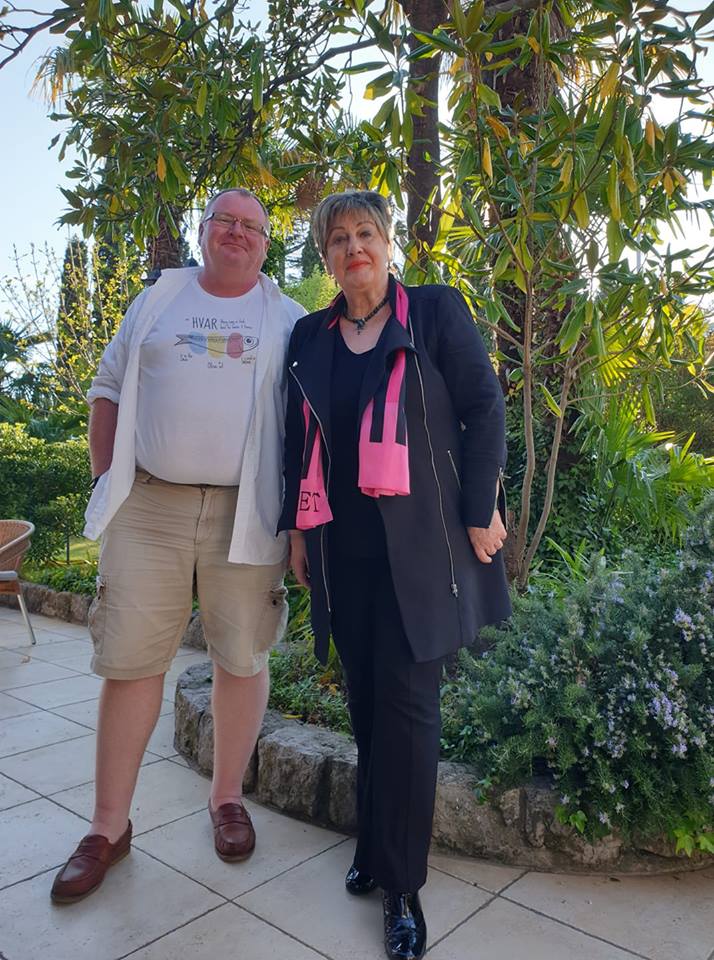
The next stop was a mere 100 metre walk to Nostromo, whose dishes were showcased together with Bistro Toni. I did not manage to learn more about their culinary offers, as I had a much anticipated meeting with Vlasta Brozicevic, owner and medical tourism dynamo behind Terme Selce, the nearby health resort which has treated, among others, over 120 Olympic medal winners in her 30-year career. A remarkable woman, whom we will be introducing in greater detail soon.
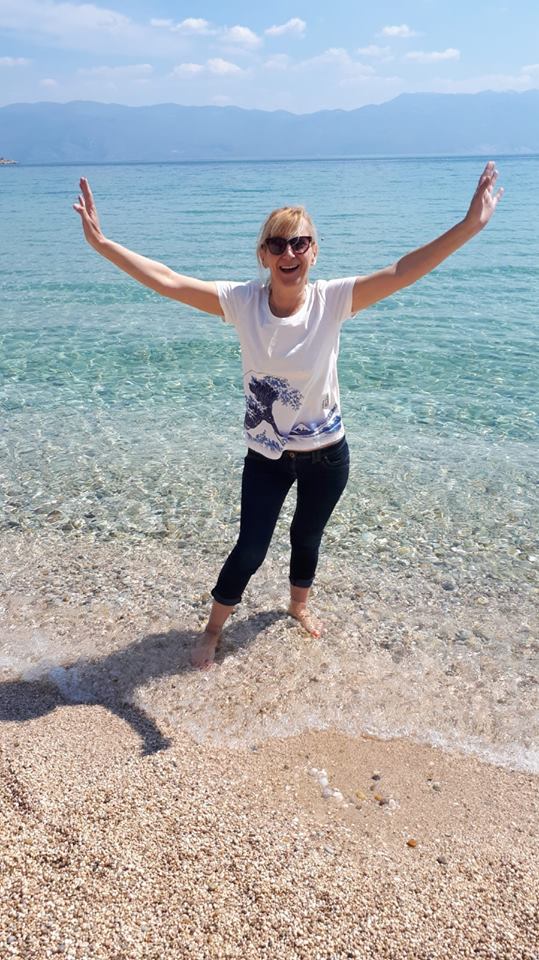
Did I say it was a gorgeous time of year to visit Krk? Young Ana quickly tempted to the lure of the Adriatic.
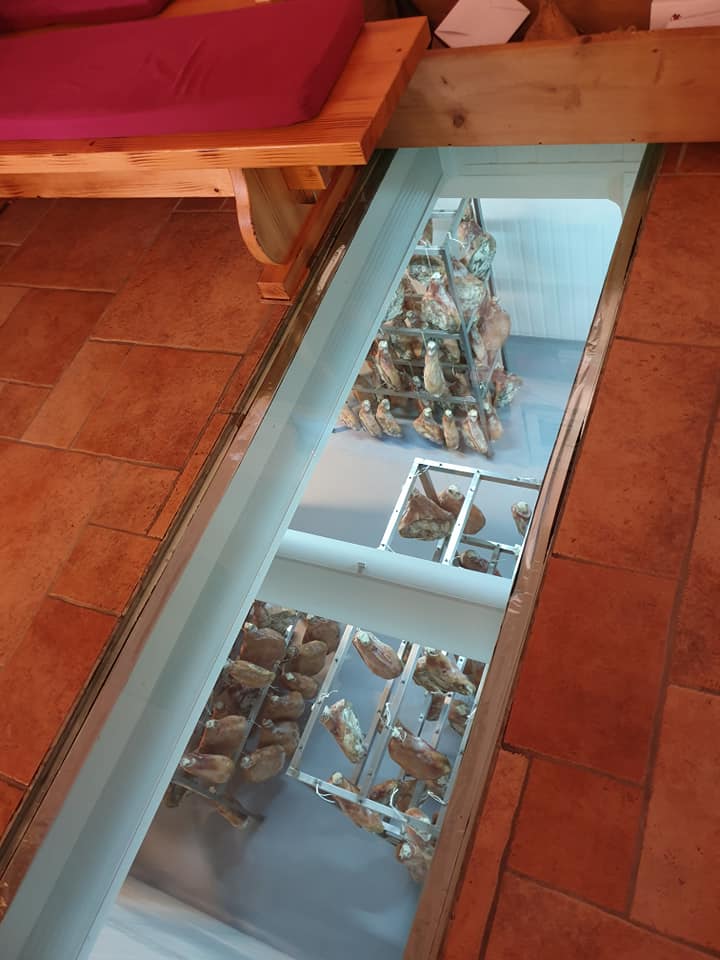
A return to the town of Krk to Kuca Krckog Prsuta (the Home of Krk Prsut), after I had missed the stinging nettle soup and dried octopus brudet at Pod Prevolt. The view through the floor at Kuca Krckog Prsuta - now I want a basement like that! The prsut was excellent, as were the associated products, and the prsut pate was to die for.

There was time to check into the very comfortable Hotel Drzica in Krk, with 40 minutes to enjoy hotel terrace views like this before a gentle walk into two for an impressive double to finish off the first night.

First up was Galija in the heart of the old town, which served up some of Krk's famous surlice pasta dishes, but I had eyes for only one - this delicious home-made ravioli stuffed with prawns and adorned with truffles - one of the highlights in a truly impressive Krk gourmet day.
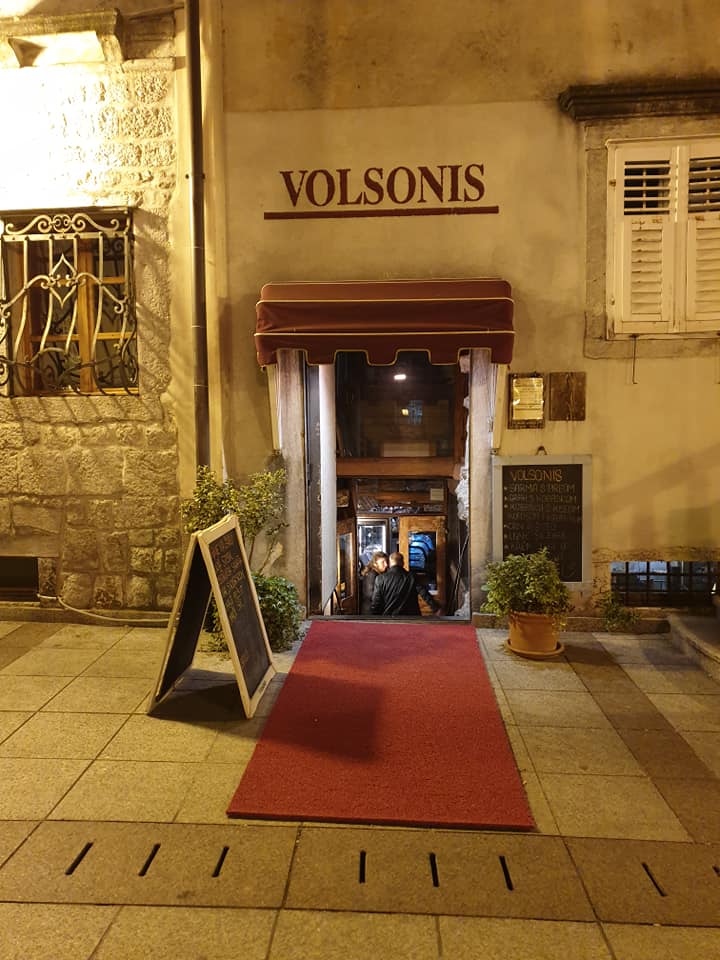
And just when I really couldn't any more, a little nightcap with nibbles at historic Volsonis in the old town of Krk. A gem of a find and a great bar with cocktails.
But what do to when you are a bar and decide to expand and find a Roman wall in the basement? Change your plans for sure, and the wall has become a major tourist attraction, while Volsonis has adapted to the new realities rather well. There is a very cool vibe, and there aren't many places in the world where you can play pool next to such antiquity.
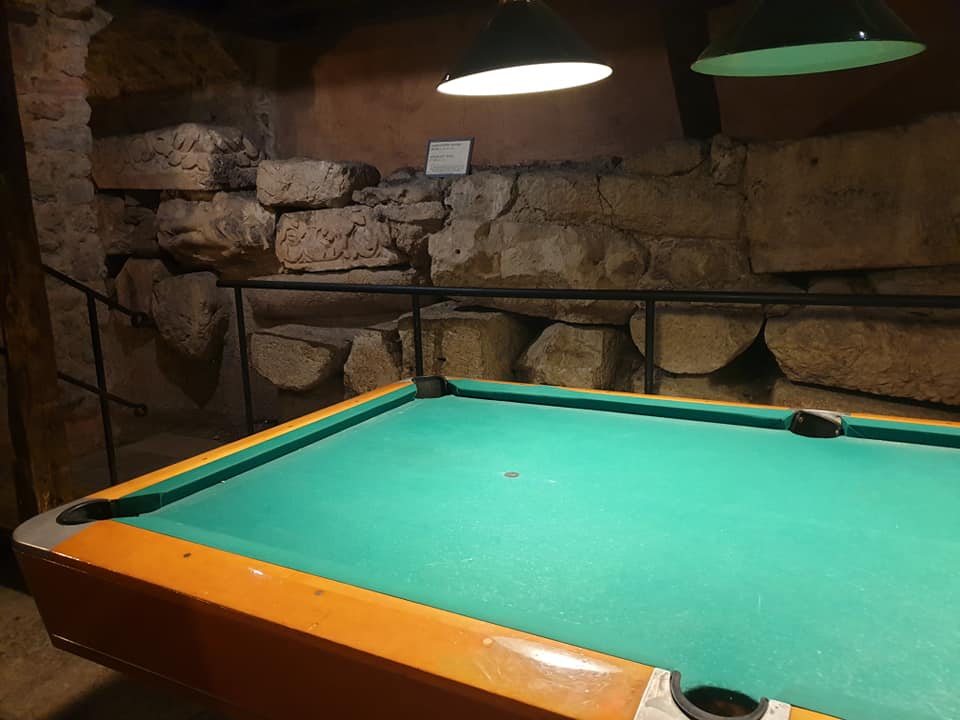
A truly breathtaking first day of gourmet and cultural discovery, and I was exhausted. My biggest fear was that Day 1 started at 11:30 and that tomorrow's programme would be even fuller with a 09:30 start. A day which would take in the fascinating Baska, Kosljun, Punat and Vrbnik. Of which much more soon...
To learn more about the Krk Food Fest, Tastes of Spring, visit the official website, or follow the event on Facebook.
“Restaurant Croatica” Plaques and Book on Leading Croatian Restaurants Presented
The best Croatian restaurants honoured.
Gastronaut Discovers the Gourmet and Cultural Treasures of the Island of Pag (VIDEO)
April 24, 2018 - The final piece of TCN coverage of the recent Gastronaut trip to Pag - a video overview from Anna Lisenko.


